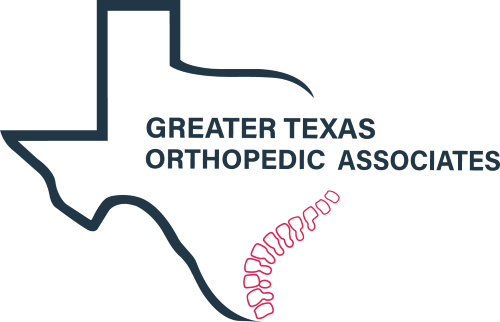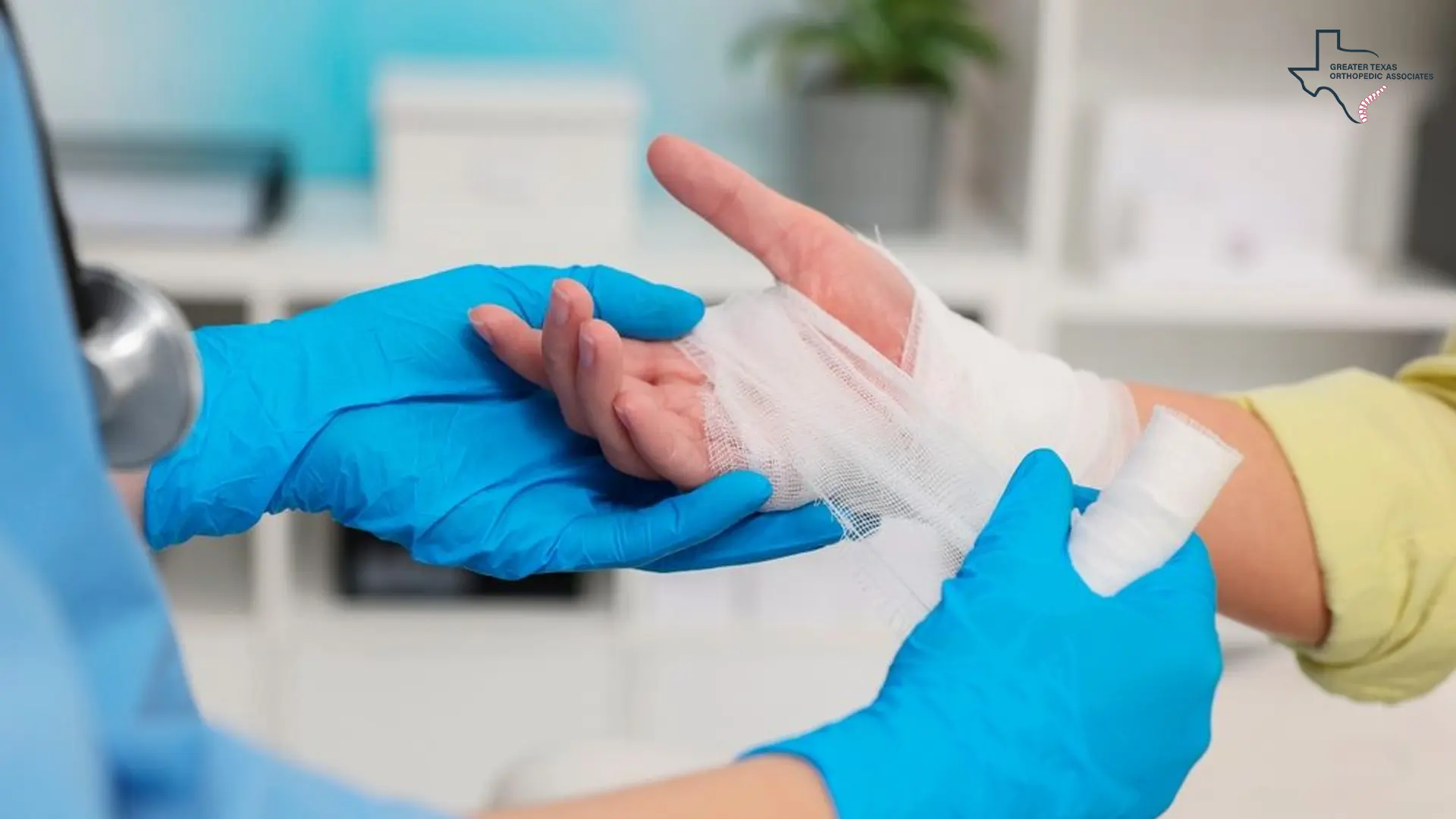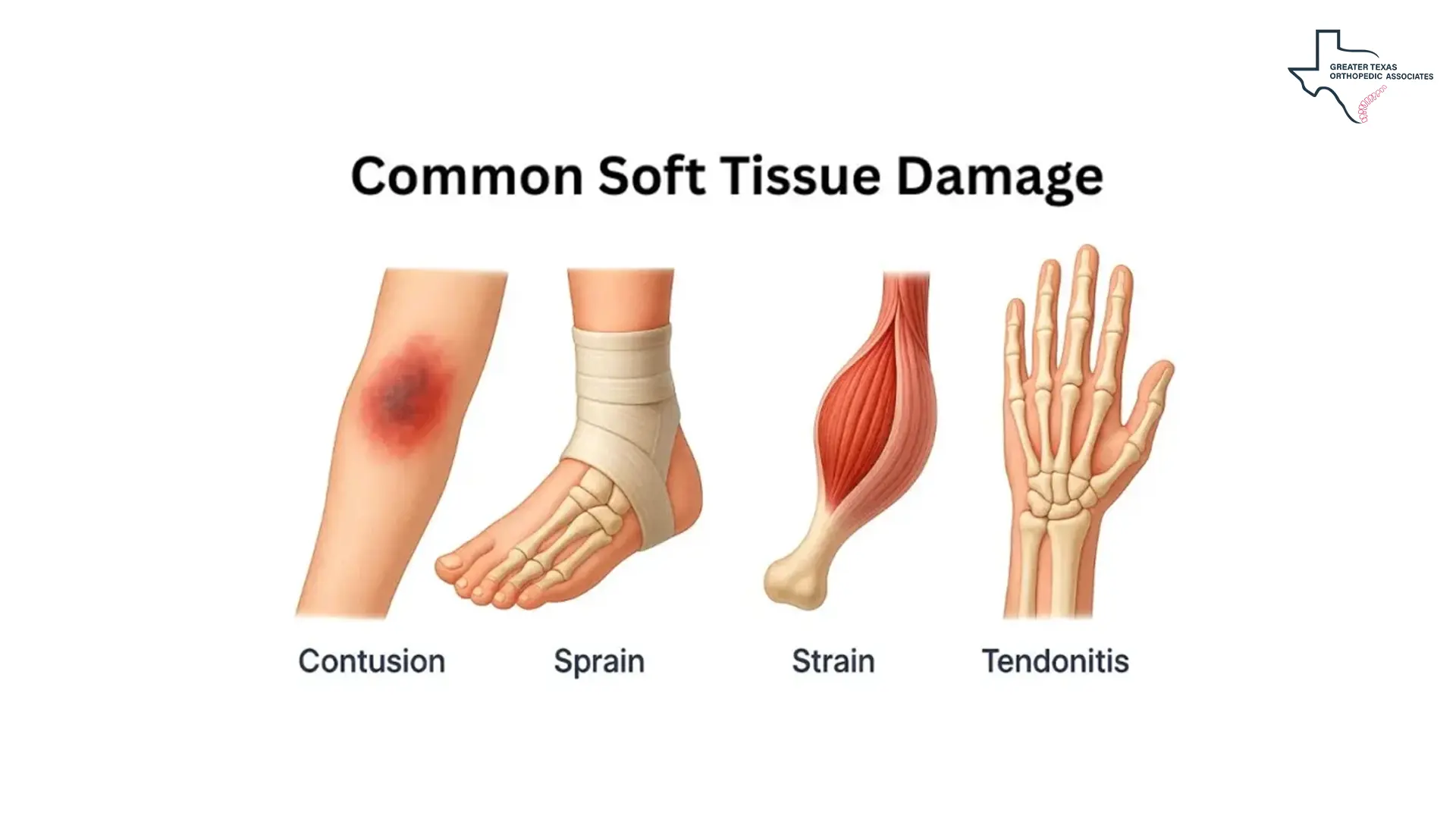Proving Soft Tissue Injuries: A Step by Step Guide to Documentation for Legal Claims
For clients and attorneys navigating the complexities of personal injury and accident related cases, presenting compelling evidence is paramount. While visible fractures or deep lacerations offer clear objective proof, injuries to muscles, ligaments, and tendons, known collectively as soft tissue injuries, are notoriously challenging to document and often subject to skepticism by opposing counsel and insurance carriers. Success in maximizing compensation relies entirely on establishing the existence, severity, and long term impact of the injury. This guide provides professional, trusted tips for documenting soft tissue injuries and outlines the critical procedures necessary to strengthen your case and understand how to prove a soft tissue injury.
For patients seeking comprehensive orthopedic and pain management support in Texas, our medical-legal specialists provide accurate injury evaluation and documentation tailored for personal injury cases.
The Challenge of Proving Invisible Damage
Soft tissue injuries are defined as damage to the body’s connective tissues, including muscles, ligaments, and tendons. They commonly arise from sudden trauma, such as motor vehicle accidents, workplace incidents, or slip and fall incidents. Symptoms, which may include pain, swelling, stiffness, and reduced range of motion, can manifest immediately or worsen over time.
The core difficulty in litigating these claims is that, unlike broken bones, soft tissue damage may not be readily apparent on standard diagnostic tests like X-rays. Insurance adjusters frequently dismiss these conditions as “minor” or “subjective” because many symptoms rely on self-reporting. However, untreated or improperly managed soft tissue injuries are not minor; they can lead to persistent pain, reduced mobility, and significant, long-term lifestyle disruptions. Consequently, comprehensive documentation is vital not only to establish the severity of the injury but also to provide the Medical Proof for Soft Tissue Damage necessary to link the injury directly to the accident (causation) and hold the at-fault party accountable. Understanding how to prove soft tissue injury requires a coordinated strategy between the client and the legal and medical teams.
Essential Steps
Successfully proving a soft tissue injury claim depends on meticulous, consistent documentation from the moment of the accident onward. Attorneys and clients must work collaboratively to execute the following Soft Tissue Injury Documentation Tips.
1. Immediate and Comprehensive Medical Treatment
The first step is seeking prompt medical attention from a licensed medical professional immediately after the accident, even if symptoms appear mild or delayed. Medical records from this initial visit serve as crucial evidence, establishing that immediate action was taken to address the injury and helping to establish the connection between the accident and the resulting symptoms.
During this and all subsequent visits, the client must describe all symptoms in extensive detail, everything that seems wrong, even if it appears unrelated to the primary injury site (such as headaches, dizziness, or tingling in the arms). Delaying medical care can severely weaken the credibility of the claim, making it easier for insurers to argue the pain is unrelated or exaggerated.
2. Meticulous Medical Record Collection
Medical records are the bedrock of proving the existence and severity of soft tissue injuries. Understanding how to prove soft tissue injury relies heavily on thorough and well organized medical documentation.
These documents must be systematically gathered and preserved, including:
- Hospital and emergency room records.
- Doctor’s notes, including diagnoses and initial assessments.
- Detailed treatment plans and rehabilitation reports.
- Prescriptions, medical histories, and billing statements.
This collection must verify the injury’s presence through appropriate testing mechanisms. Organized medical records, arranged chronologically, allow the attorney, adjusters, and court to review the claim efficiently and understand the timeline of the injury and treatment.
3. Maintaining a Detailed Personal Injury Journal
Since pain, emotional distress, and loss of enjoyment of life (non-economic damages) are intangible, a personal injury journal provides critical evidence to substantiate these losses. This is a powerful Soft Tissue Injury Documentation Tips component that goes beyond objective medical reports.
The client should maintain a daily log detailing:
- Symptom tracking: Intensity, frequency, and specific characteristics of pain.
- Daily impact: How the injury limits daily tasks, such as sleeping, working, driving, household chores, or childcare responsibilities.
- Emotional toll: Feelings of anxiety, depression, or relationship problems resulting from the accident.
- Progress and appointments: Logging medical appointments, physical therapy sessions, and noting any setbacks in recovery.
The thoroughness of this journal in describing the negative effects of the injury helps demonstrate how to prove soft tissue injury by quantifying the intangible losses.
4. Gathering Corroborating Evidence
To supplement medical documents, visual and testimonial evidence is required:
Photographic/Video Evidence: Take pictures of the injury (bruising, swelling, restricted mobility) immediately after the incident and continuously during recovery to demonstrate progression or deterioration. Also capture the accident scene, including vehicle damage and surrounding conditions.
Police and Accident Reports: Obtaining the official report provides a professional summary of the incident, including date, time, location, points of impact, and opinions as to liability, which is essential for connecting the injury to the crash.
Witness Statements: Collect contact information and documented statements (written, audio, or video) from anyone who observed the accident or witnessed the client struggling afterward. Third-party verification adds credibility and helps counter insurance tactics that downplay the injury.
5. Financial and Employment Documentation
The economic impact of the injury must be demonstrated through employment records, such as work restrictions, missed workdays, or reduced productivity. Documentation proving income (pay stubs or statements of accounts) must be secured if lost wages are claimed. This financial documentation helps underscore the compensation claim by showing the quantifiable loss associated with the soft tissue damage.
When organized diligently, these steps provide a robust evidentiary package, demonstrating how to prove soft tissue injury through comprehensive records.
The Role of Objective Evidence: Medical Proof for Soft Tissue Damage
While soft tissue injuries are often invisible on basic X-rays, specific diagnostic imaging techniques provide the necessary Medical Proof for Soft Tissue Damage to validate the claim.
Magnetic Resonance Imaging (MRI)
The MRI is arguably the most valuable tool for diagnosing soft tissue pathologies. Unlike X-rays, which primarily visualize dense bones, MRI utilizes strong magnetic fields and radio waves to generate highly detailed images of soft tissues, including muscles, ligaments, tendons, and cartilage.
- Superior Detail: MRI excels in providing detailed, multi-planar images, allowing healthcare providers to precisely identify the location and extent of damage, such as ligament tears, muscle strains, or joint damage.
- Gold Standard: MRI is often the gold standard for diagnosing critical soft tissue conditions like anterior cruciate ligament (ACL) tears and meniscal injuries.
- Safety Profile: A significant advantage of MRI is that it does not involve ionizing radiation, making it a safer option for patients requiring multiple or repeated follow-up scans to monitor chronic conditions.
For severe or complex soft tissue cases, relying on the superior imaging capabilities of the MRI is essential for generating objective Medical Proof for Soft Tissue Damage.
X-rays, CT Scans, and Ultrasound
Other modalities play important, albeit distinct, roles in the diagnostic process:
X-rays: These are quick, cost-effective, and widely available, excelling in visualizing skeletal abnormalities like fractures or dislocations. While limited in soft tissue assessment, X-rays are indispensable as a first-line screening tool to rule out bone-related injuries.
CT Scans (Computed Tomography): CT scans, while involving higher radiation exposure than conventional X-rays, provide detailed cross-sectional images, which are particularly valuable in assessing complex fractures or providing detailed anatomical insights, especially in areas like the spine.
Ultrasound: Ultrasound is an emerging imaging technique valued for its real-time imaging capabilities and lack of ionizing radiation. It is frequently used for evaluating soft tissue injuries and guiding injections.
It is important to note that even if imaging results appear “normal” (especially for whiplash), the fact that these objective tests were performed demonstrates that the care team took the symptoms seriously, thereby strengthening the legal case. Requesting that the healthcare provider note the relationship between the injury and the accident in these diagnostic reports can add weight to the personal injury claims.
Establishing Credibility: The Soft Tissue Injury Legal Process
Navigating the Soft Tissue Injury Legal Process successfully requires continuous commitment to recovery and an integrated medical-legal strategy.
Continuous Treatment and Consistent Records
Following through with all prescribed medical treatment and therapy is one of the most vital Soft Tissue Injury Documentation Tips. This includes attending all recommended appointments, whether with doctors, physical therapists, or pain specialists, and adhering to prescribed treatments. Consistent care demonstrates to insurers and the court that the injured party is actively managing the injury and not exaggerating the symptoms.
Continuous records are essential for building a medical timeline that documents when the pain began, how it is being treated, and the expected path toward recovery. Timely intervention, based on precise diagnosis, contributes not only to better patient outcomes but also reduces long-term disability, demonstrating the necessary medical history required in the Soft Tissue Injury Legal Process. Each session should be meticulously documented, including dates, therapies provided, and progress notes, supporting the ongoing nature of the injury and the associated costs needed for compensation.
Multidisciplinary Collaboration for Better Outcomes
Soft tissue injuries often involve complex pain and neurological components alongside orthopedic trauma. The integration of specialized care through a multidisciplinary team improves both patient recovery and legal outcomes. A multidisciplinary approach combining orthopedic expertise, neurological assessment, and advanced pain management techniques (such as Epidural Steroid Injections and Radiofrequency Ablations) ensures a complete and credible medical picture for every case.
For patients experiencing persistent back or neck pain, targeted treatments like Epidural Steroid Injections or Radiofrequency Ablation (RFA) can provide significant relief. For a more detailed explanation of how these procedures work and their benefits, check out our comprehensive guide on [What is Radiofrequency Ablation (RFA) and What Is It Used For?] and [What is an Epidural Steroid Injection?].
This collaborative approach ensures that the injury is assessed from all necessary clinical perspectives, providing a complete medical picture. This expertise is critical during the Soft Tissue Injury Legal Process because it enables the legal team to present comprehensive evidence covering orthopedic limitations, nerve damage, and chronic pain management needs, thereby countering claims that the injury is merely subjective.
📌To explore our approach, visit GTOA’s [Pain Management Services in Texas].
How Incomplete Documentation Can Weaken a Case
Incomplete or disorganized documentation is the primary vulnerability in soft tissue injury claims. Without strict, clear documentation covering all aspects of the injury, treatment, and impact on daily life, insurance companies are likely to deny the claim or offer a significantly reduced settlement amount.
For example, a delay in seeking medical care can lead insurers to argue that the pain is not related to the accident. If a patient fails to attend follow-up physical therapy appointments, an insurer might argue that the injury symptoms are not severe enough to warrant compensation, suggesting the claimant is exaggerating their symptoms. Similarly, if the attorney cannot provide consistent, organized records ranging from a daily journal of pain severity to objective Medical Proof for Soft Tissue Damage (like an MRI report), it gives the defense ground to challenge the severity and duration of the damages sought, thereby weakening the case for maximum compensation. This highlights why effective Soft Tissue Injury Documentation Tips are not optional, but essential.
Conclusion
Proving soft tissue injuries demands a partnership grounded in medical precision and legal insight. The challenge of establishing how to prove a soft tissue injury requires collaboration, consistent documentation, and expert evaluation.
One of the most overlooked aspects of soft tissue injury litigation is the need for consistent communication between the medical and legal teams. A coordinated exchange of medical updates, imaging results, and treatment notes allows attorneys to build stronger narratives backed by verified data. This collaboration also ensures that no gaps exist in the medical timeline, which insurance adjusters often exploit.
By approaching each case through a medically verified and legally sound process, clients and their attorneys can demonstrate not only the presence of an injury but also its continuing effects on daily life, employment, and emotional well-being. This alignment between medical data and legal argumentation remains the cornerstone of every successful soft tissue injury claim.
Based in Texas, our specialists provide comprehensive injury assessments, advanced pain management, and neurosurgical evaluations designed to support both recovery and legal success. Their commitment to precise medical documentation and quick orthopedic evaluations ensures that every aspect of the patient’s condition is fully recognized and defensible in court.





